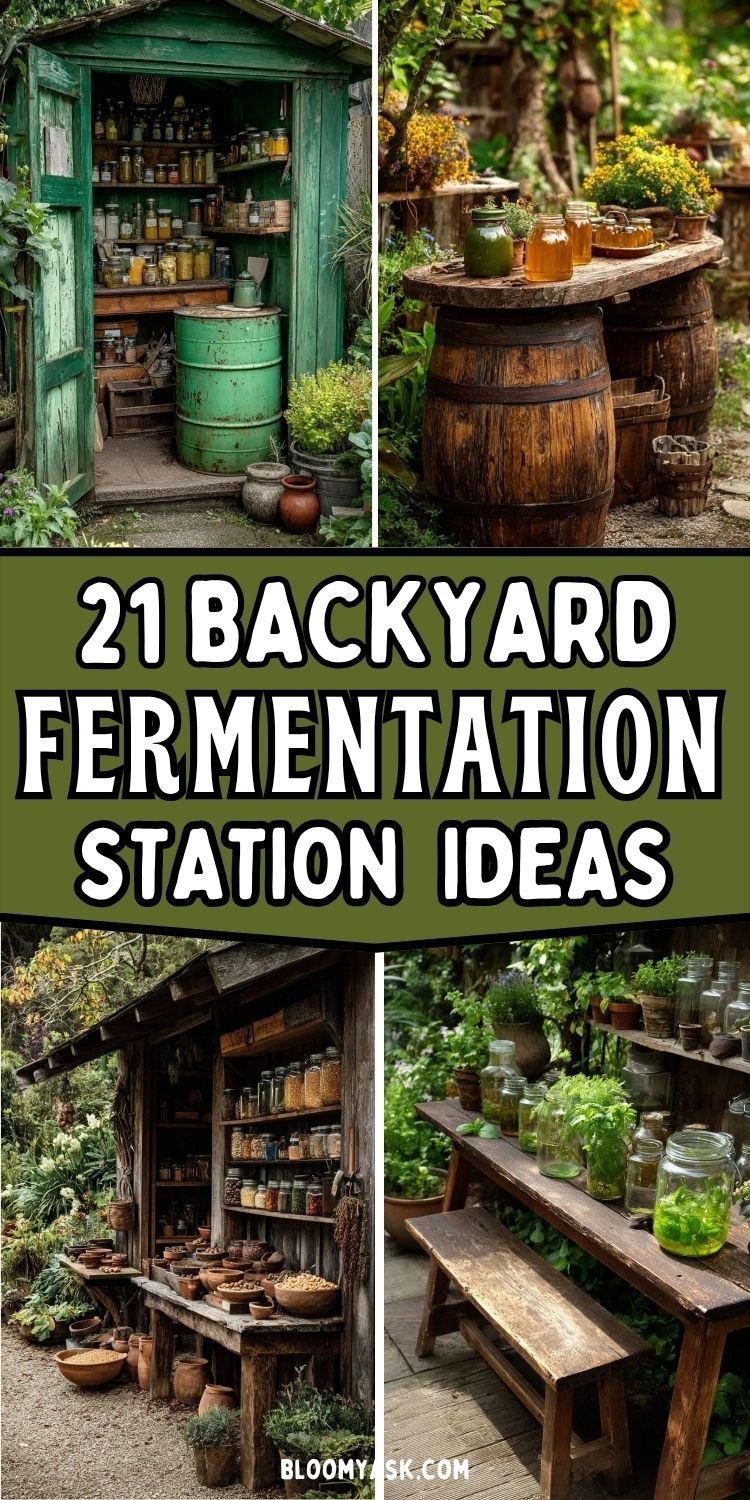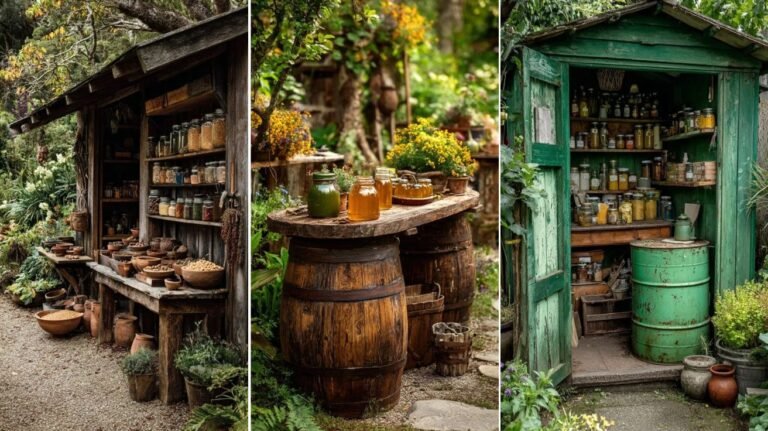When I first got into fermenting, I started with a single jar of sauerkraut on the kitchen counter.
Then it was sourdough. Then pickles. Then kombucha. Before long, I was juggling jars and crocks in every corner of the house, and dreaming of a setup that didn’t take over the dining table.
If that sounds like where you’re headed too, you’re in the right spot.
A backyard fermentation station doesn’t have to be fancy. It just needs to work for you, whether that’s a tucked-away shelf on the porch, a repurposed potting bench, or a full DIY shed setup.
These 21 ideas are practical, creative, and built for real-life fermenters who want a little more space to let things bubble, brew, and thrive.
1. Repurpose a Weathered Shed into a Backyard Fermentation Hub
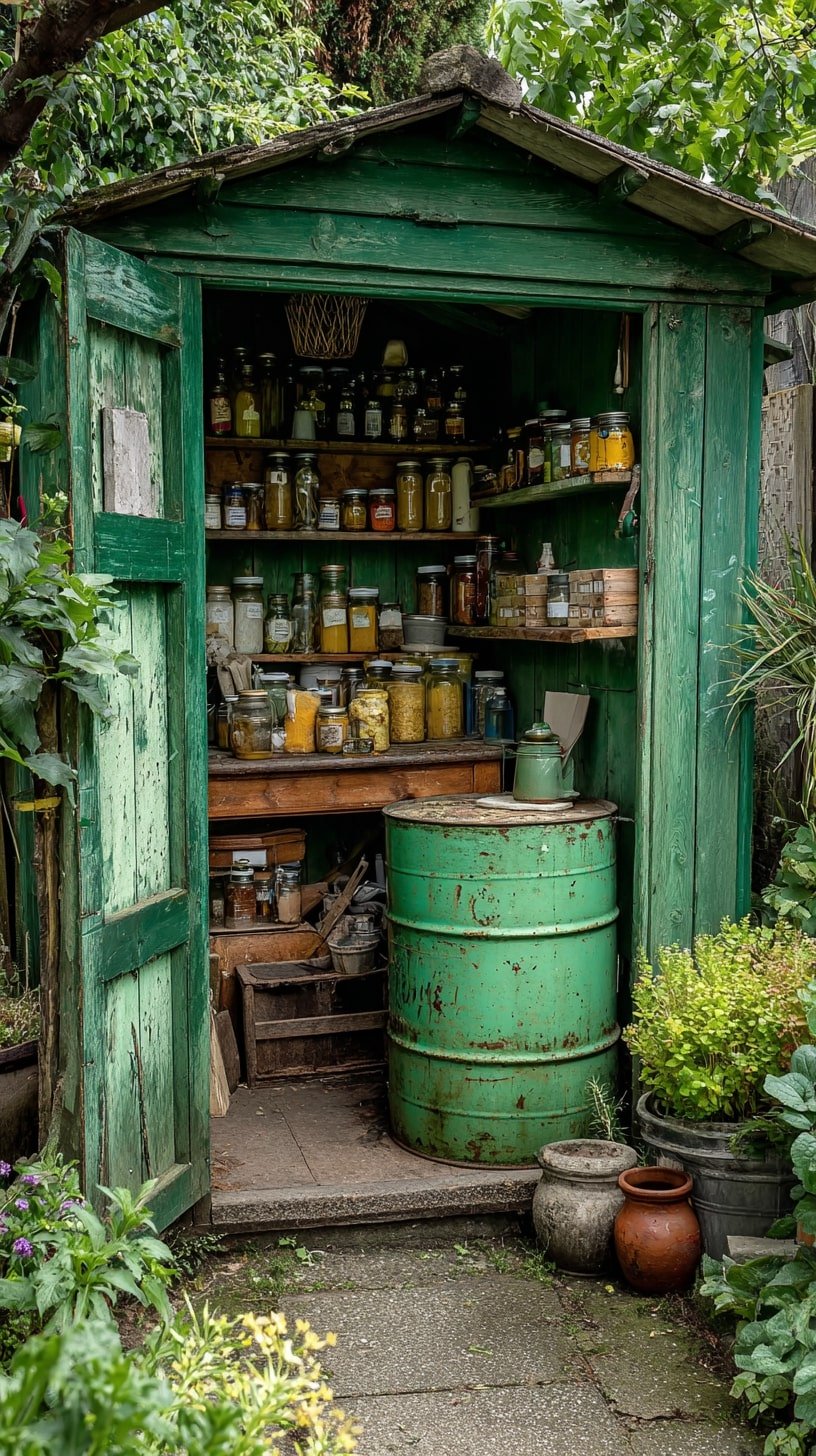
Wood patina, rusted metal, glass jars packed tight,this shed nails rustic utility.
Every shelf earns its keep. Row after row of ferments, pickles, and dried herbs signal smart vertical use.
That big green barrel? A potential kraut vat or kombucha brewer. It’s all tucked in, yet nothing feels crammed. A worn workbench doubles as prep space. Rough-hewn, intentional, honest.
2. Build a Barrel Table for Open-Air Fermenting
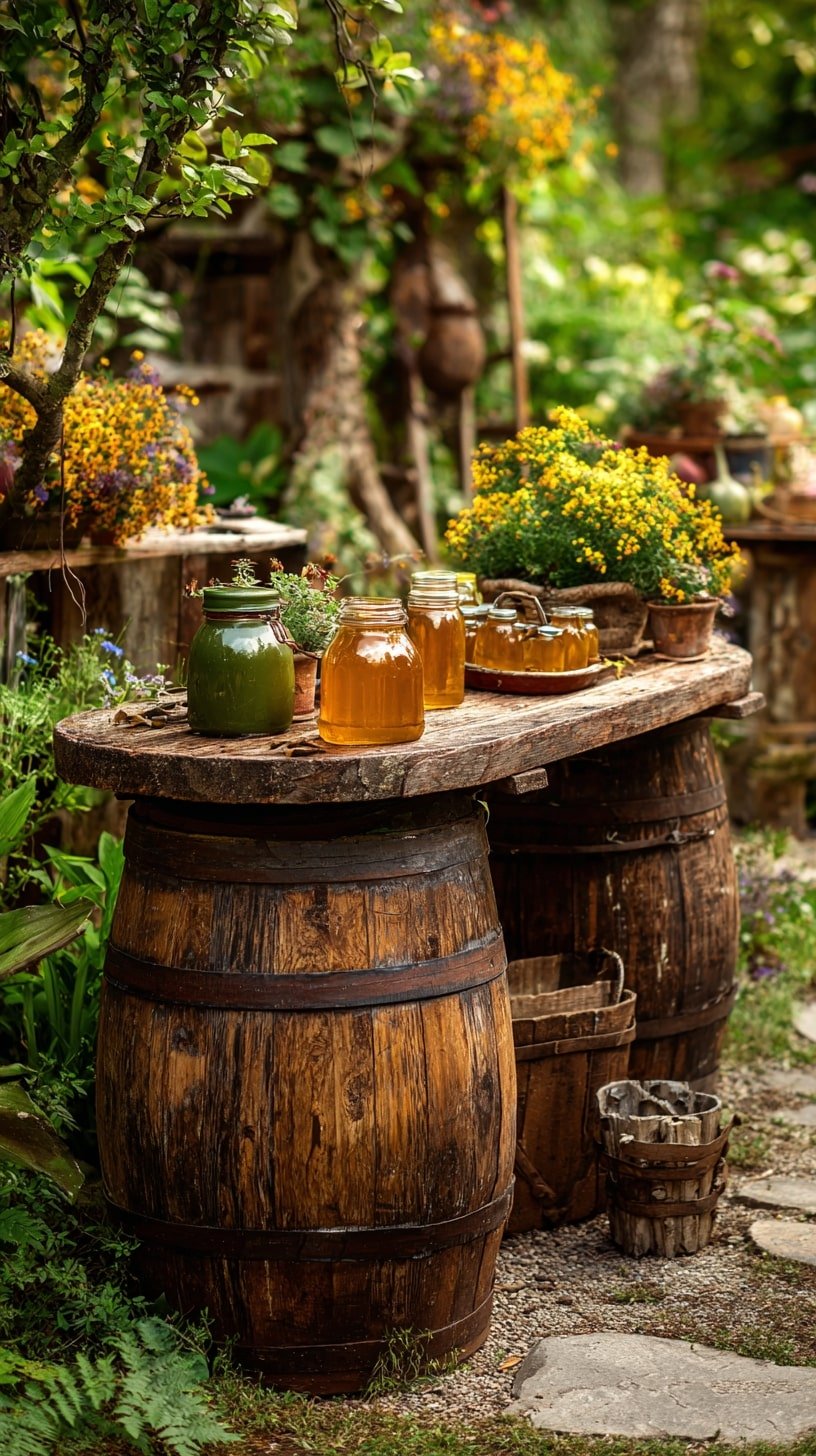
Simple setup. Serious charm. Two weathered barrels anchor a thick, raw wood slab,forming a table that’s as sturdy as it is storied. Jars of kombucha and ferments catch filtered light beneath a fruit tree canopy.
No need for perfection here. The uneven surface, chipped edges, and clustered pots make it feel lived-in. It invites tinkering. It works hard and looks good doing it.
3. Line Open Shelves with Jars for Visual Inventory and Speed
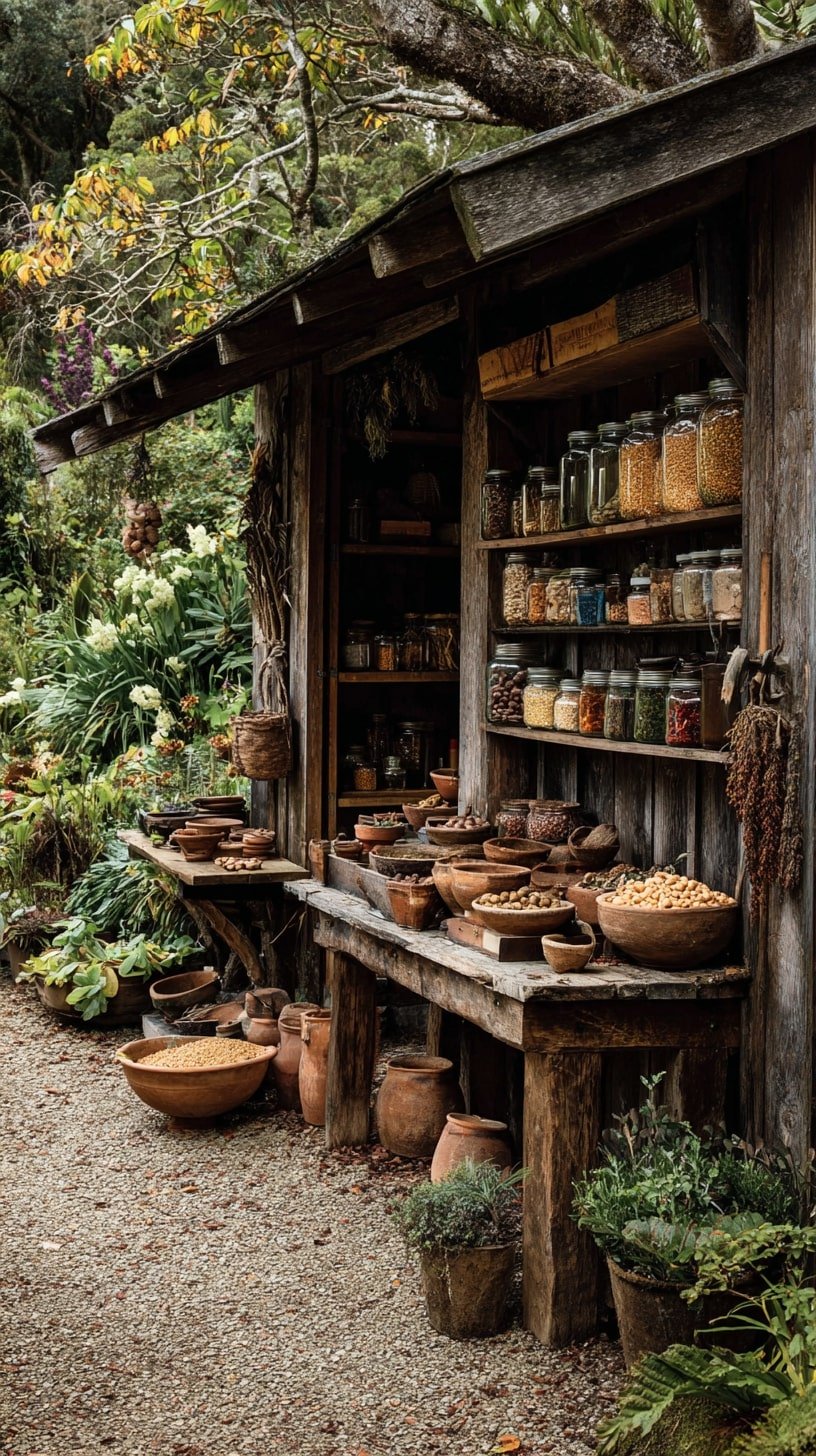
Everything’s in sight. That’s the power here. Wide open shelving holds a rainbow of ferments, grains, seeds, dried roots. Mason jars, neatly grouped, make ingredient scanning effortless.
No digging, no guessing. Rustic wood adds warmth, texture. Low benches, hand-thrown bowls, and terra cotta jugs tie it all to the earth. Feels old-world. Operates like a modern prep lab.
4. Set Up a Herb Bench for Sun-Driven Infusions
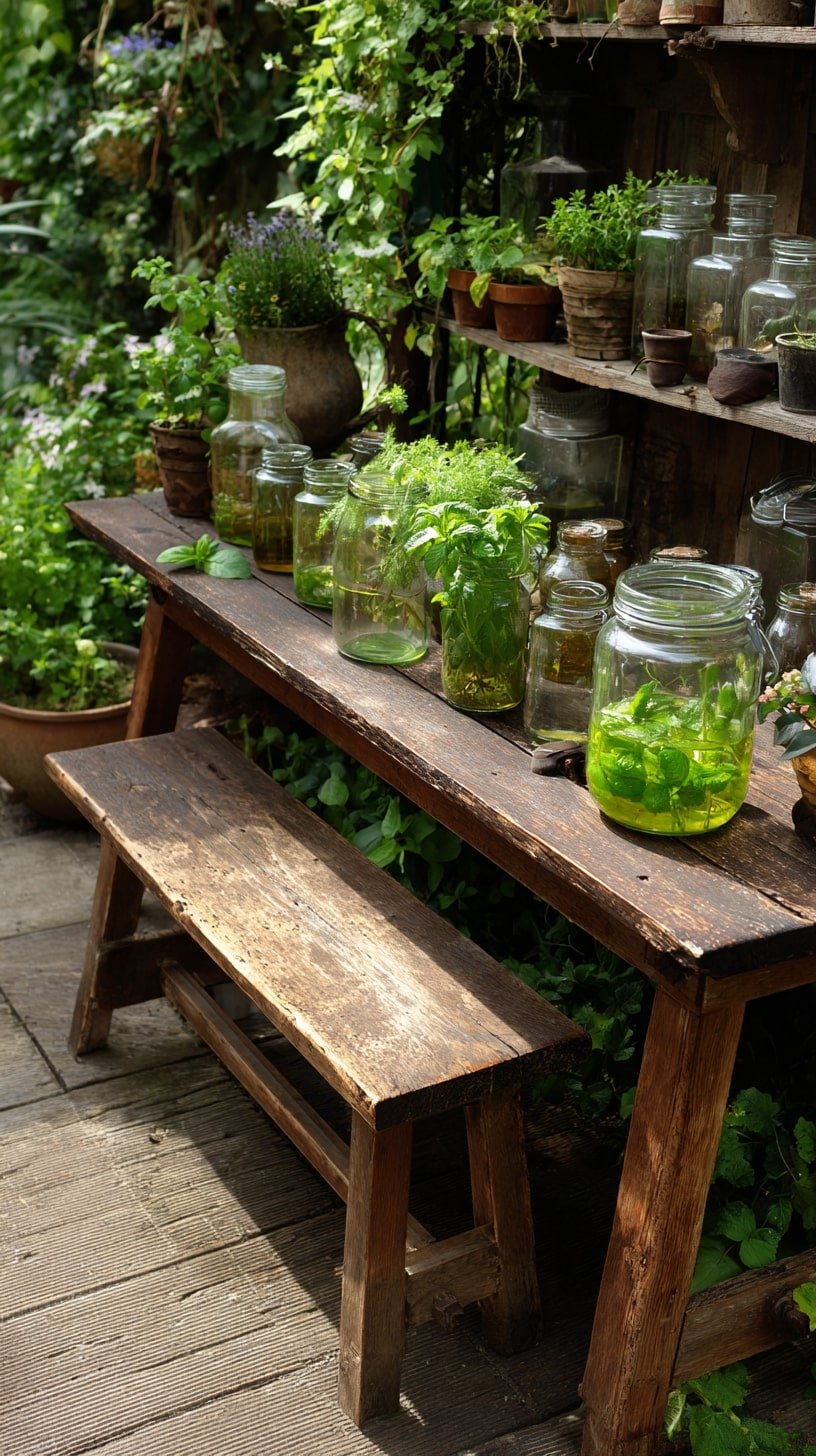
Simple structure, clever use. A narrow bench becomes a fermentation hotspot, soaking up dappled sun beside a living wall of green.
Jars filled with herbs and oil line up for solar infusion, pulling color and flavor over time.
Vines above soften the light. A lower shelf adds depth. Compact, productive, unfussy. It hums with quiet utility. Nothing wasted.
5. Integrate Curved Rooftop Paths for Passive Fermentation Flow

Go big. This rooftop garden layers design and ecology,perfect for city-scale fermentation concepts.
The winding paths curve like slow rivers, ideal for placing solar infusers or temperature-sensitive vessels along microclimate zones. Dense plantings regulate heat, shield jars from wind.
It’s not backyard anymore. It’s urban, engineered, living infrastructure. A fermentation corridor hiding in plain sight. Quietly powerful.
6. Power Up Rooftop Ferments with a Solar-Linked Filtration Unit
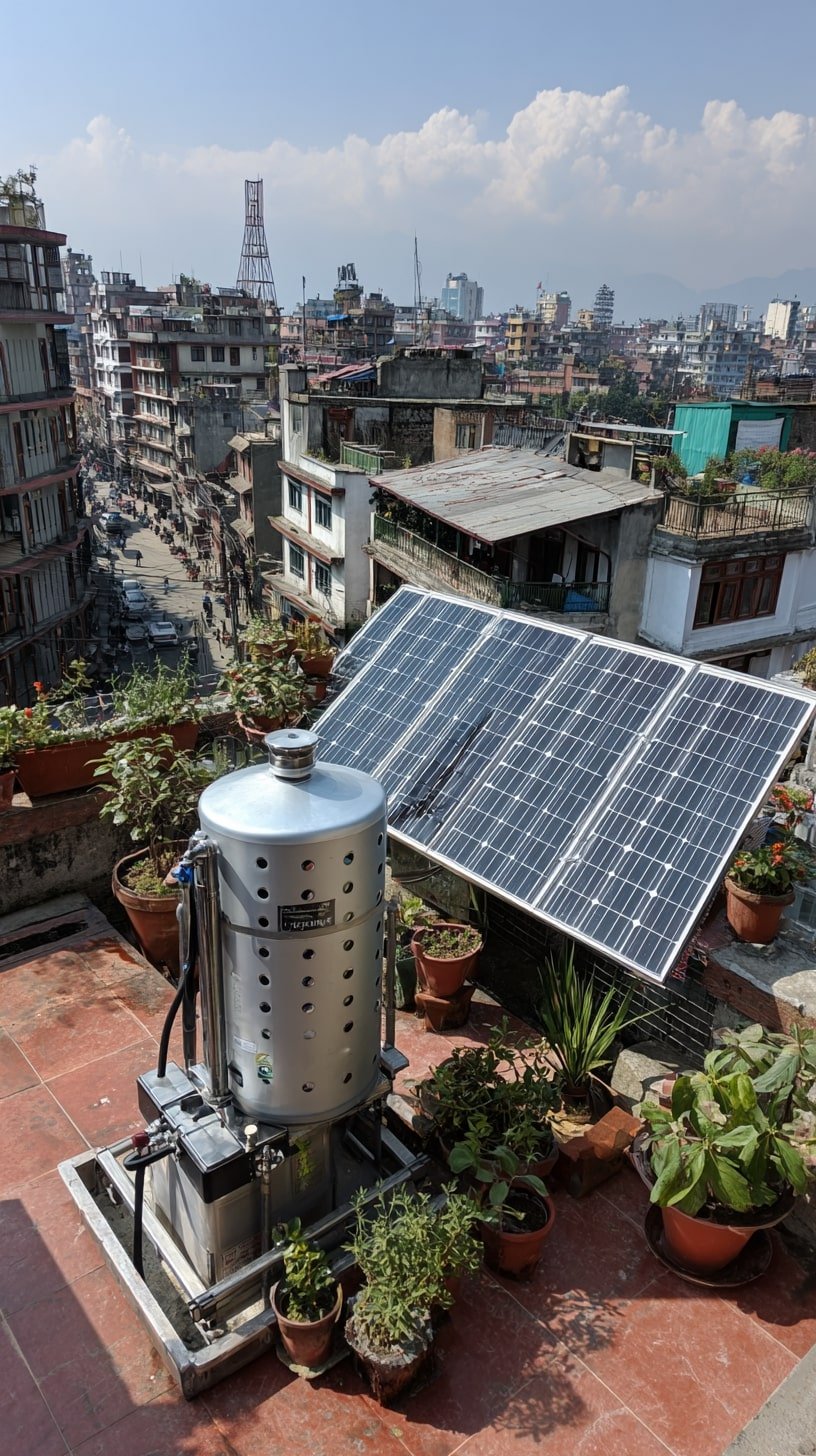
Fermentation starts with water. Clean water. This setup pairs solar panels with a compact rooftop filtration tank,ideal for kombucha, brines, or rinsing produce before processing.
Terracotta pots soften the tech edge, adding herbs and microgreens within reach. Tight space, high yield. Zero grid dependency. Looks industrial at first glance, but tucked within greenery, it quietly blends. Form meets function.
7. Use Domed Roof Wells to Channel Seasonal Ferment Water

Unusual form, practical use. These blue domes aren’t just charming,they’re natural collection points.
Sloped metal roofs and vertical piping hint at passive rain capture, ideal for supplementing fermentation rinses or prepping herbal brines.
Wood siding softens the urban chill, warming up function with form. It’s quirky, yes, but built for climate cycles. Gravity-fed, winter-ready, surprisingly elegant.
8. Elevate Steel Tanks for Gravity-Fed Fermentation Water
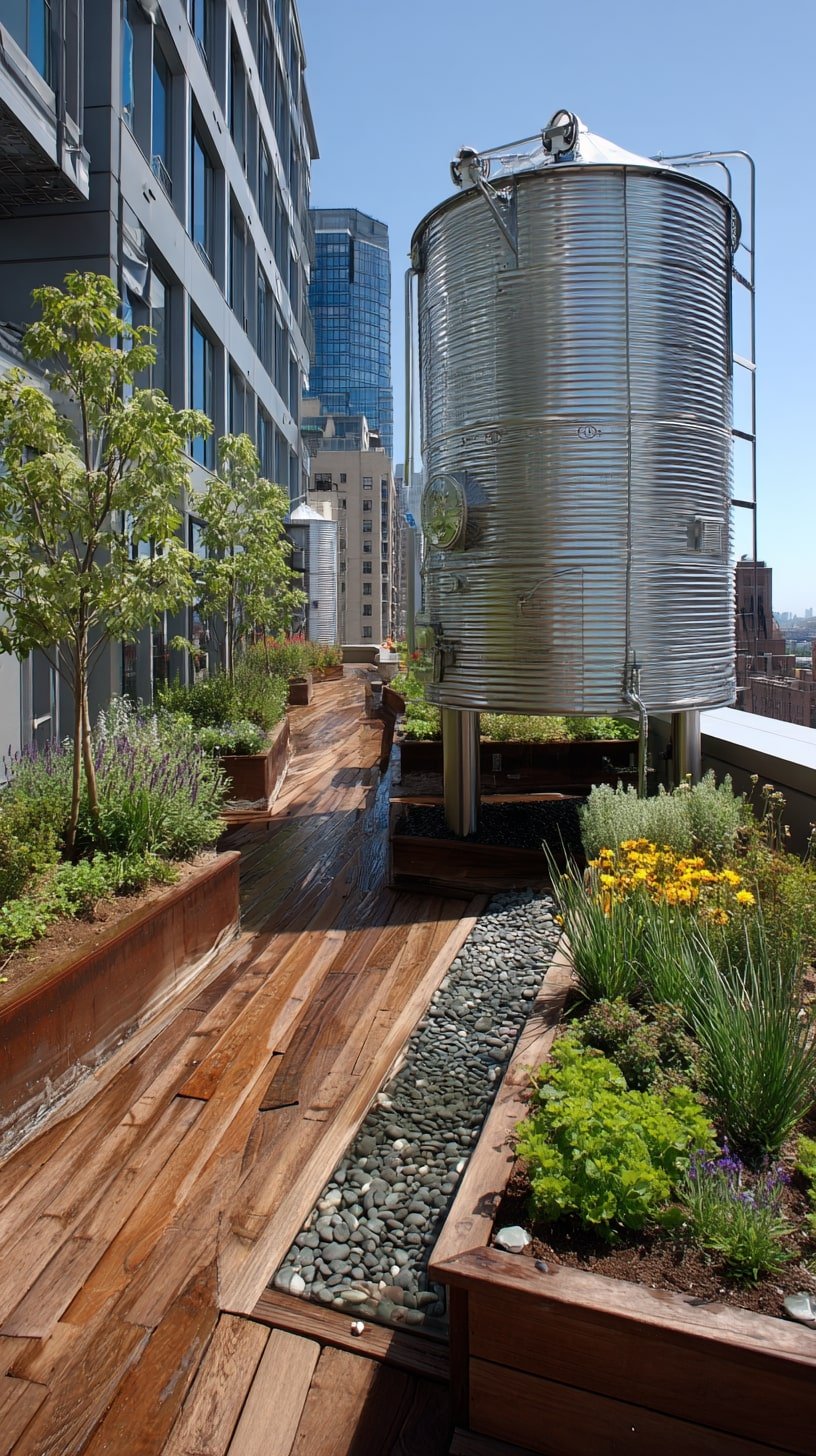
Start high, flow low. These lifted corrugated steel tanks deliver natural water pressure,no pumps needed.
That matters when rinsing jars or topping off brines. Surrounding raised beds offer herbs on demand.
Clean runoff drains along a pebble-lined channel, keeping the wood deck dry and walkable. Practical. Urban. Surprisingly serene. All lines clean, all elements working together. No excess.
9. Layer Gabion Walkways for Drainage-Ready Rooftop Ferments
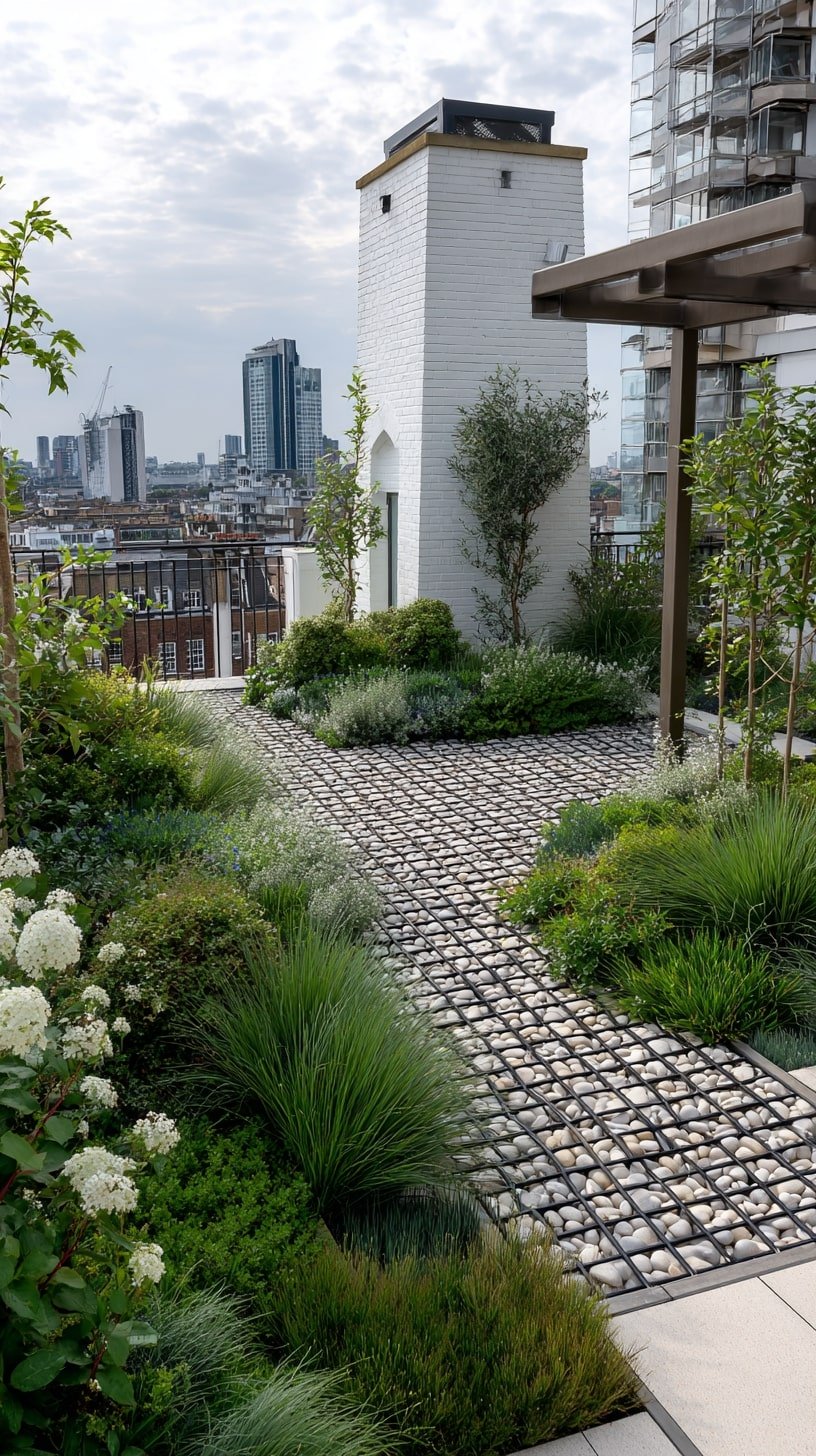
Hardscape meets utility. That pebble-filled gabion grid does more than look sharp,it drains fast. Great for managing rinse runoff or sudden rain near rooftop fermentation setups.
Native shrubs and herbs create a microclimate buffer, moderating sun and wind exposure. Everything’s tucked low, keeping skyline views wide open. Balanced. Breezy. Built to handle weather without losing calm.
10. Combine Wetland Beds with Rooftop Tanks for Closed-Loop Ferment Support
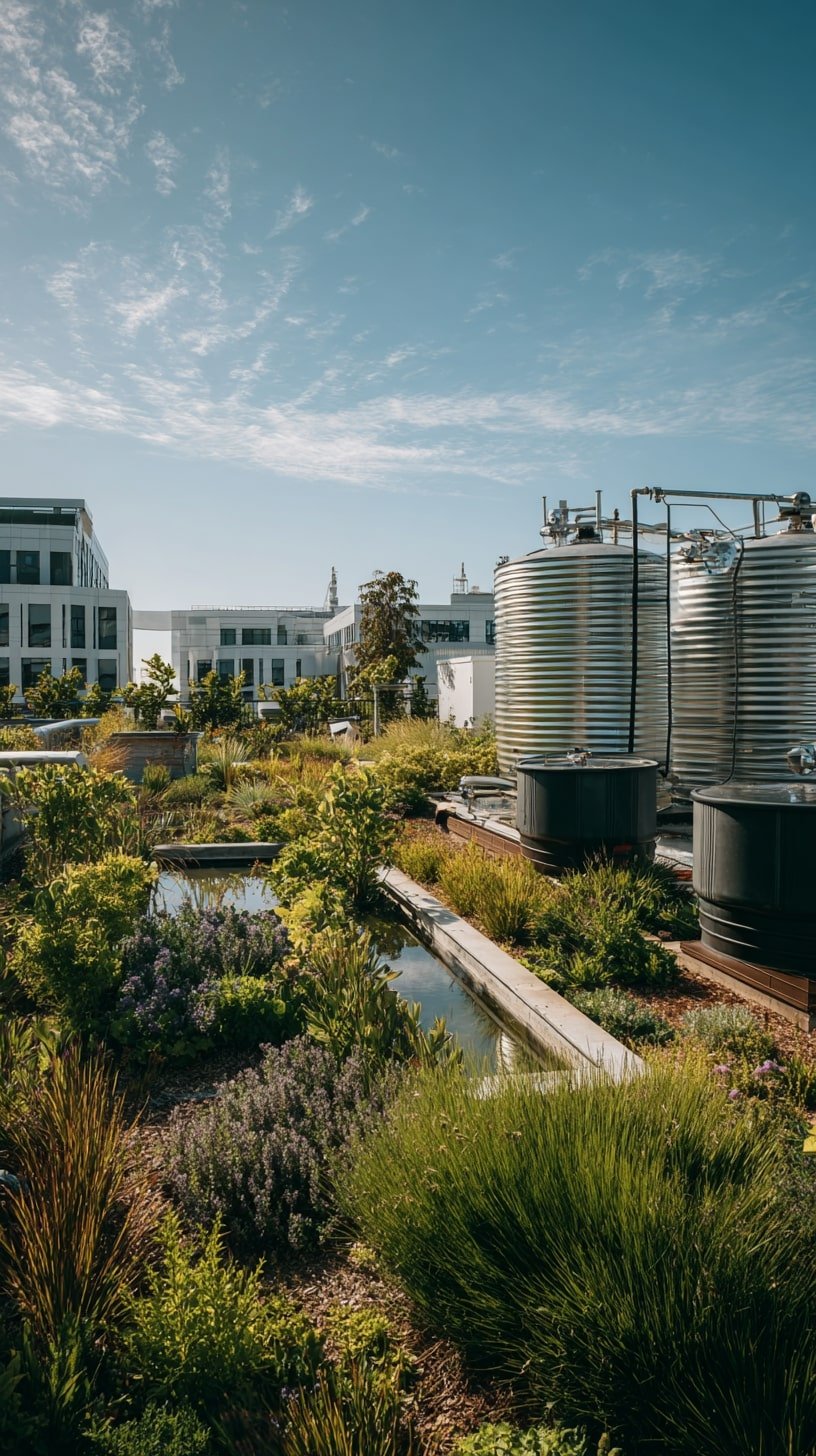
Here, every inch earns its keep. Corrugated tanks gather rain. Raised planters grow herbs.
Narrow channels mimic wetlands,slowing runoff, filtering water passively. That’s more than garden. It’s an integrated system. Great for feeding rinsing stations, herb prep, or cooling fermentation crocks.
Metal, wood, water, foliage,all in sync. Harsh sun? Wind exposure? Already handled. Quiet resilience built into every layer.
11. Add Perforated Steel Panels for Ventilation and Drainage Efficiency
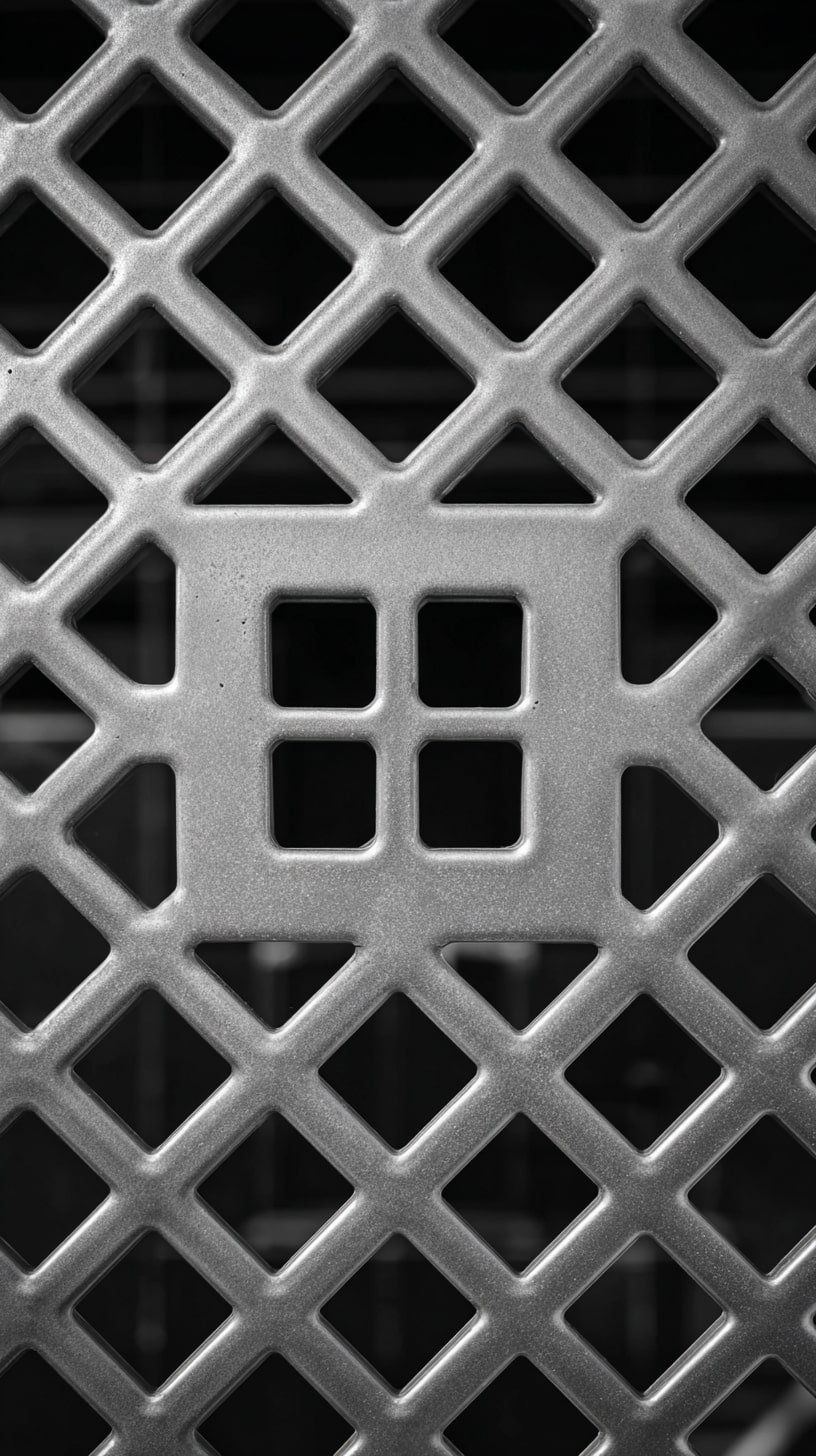
Strong. Clean. Functional. This perforated steel panel balances airflow with durability,perfect for fermentation setups that need ventilation without exposure.
Its diamond grid disperses moisture while the tighter central square hints at zoning or modular stacking. Ideal for shelving, floor grates, or vertical dividers in rooftop systems. No rust, no warping. Just quiet, industrial precision doing invisible work.
12. Channel Overflow with a Pebble Trough Beside a Rooftop Tank
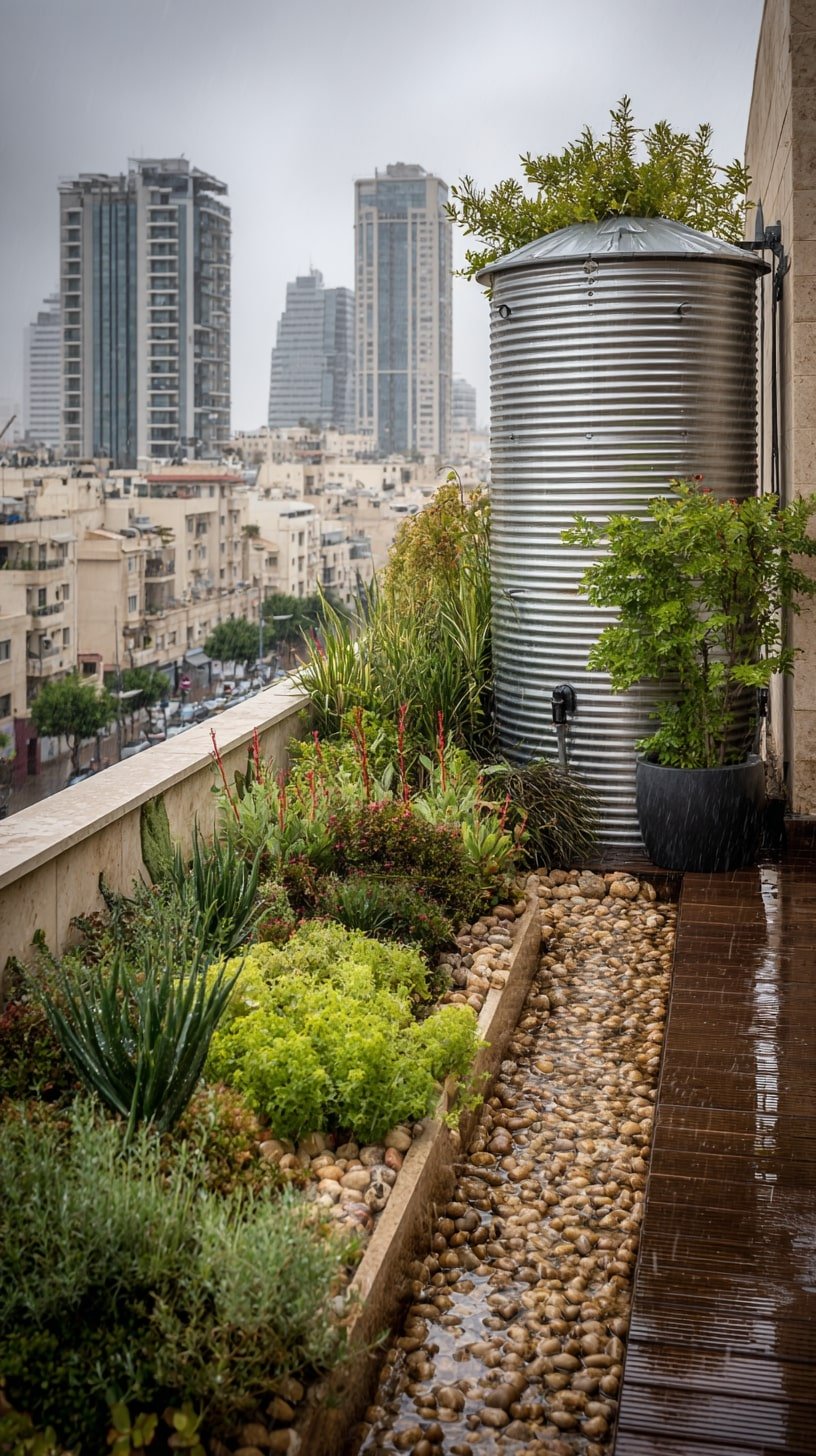
Here’s control with grace. Rain spills from the corrugated tank, runs straight into a rock-lined trench,no mess, no pooling. Plants hug both sides, absorbing extra moisture and softening the utility.
Everything flows. Even in dense urban sprawl, this small patch holds green power. Lettuces, aloe, sedum,they thrive. Compact, vertical, smart. Water where it’s needed, nowhere else.
13. Mount a Compact Barrel on Roof Eaves for Direct Ferment Supply
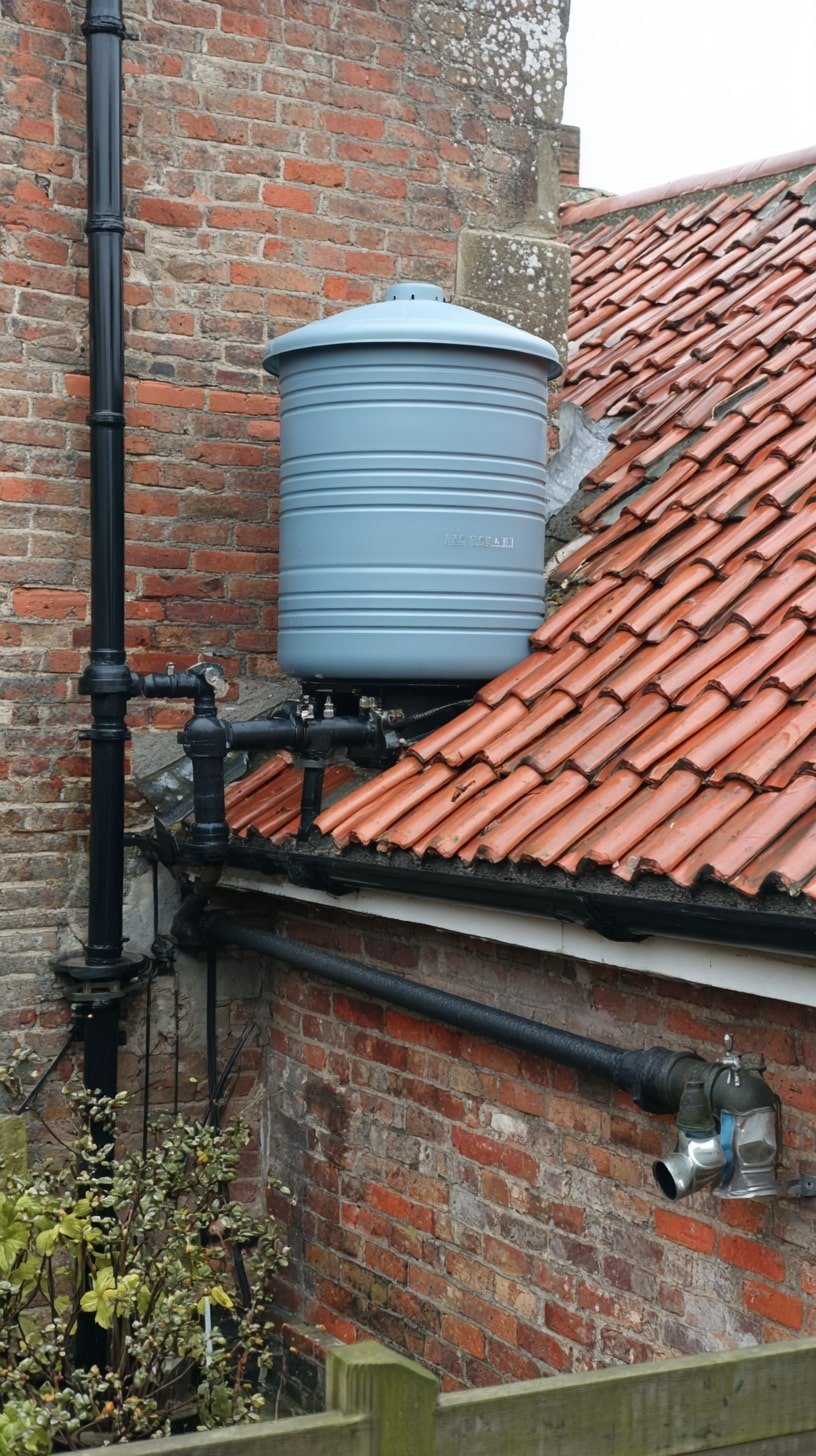
No-frills, all function. This eave-mounted tank skips aesthetics, but nails efficiency.
Positioned just above gutter flow, it catches runoff fast and feeds gravity-powered lines directly into prep zones below. The slim footprint suits tight spaces.
No ground real estate lost. Terracotta tiles and old brick contrast the sleek barrel, grounding it in tradition. Rural tech with urban.
14. Install Industrial Control Panels for Precision Ferment Monitoring
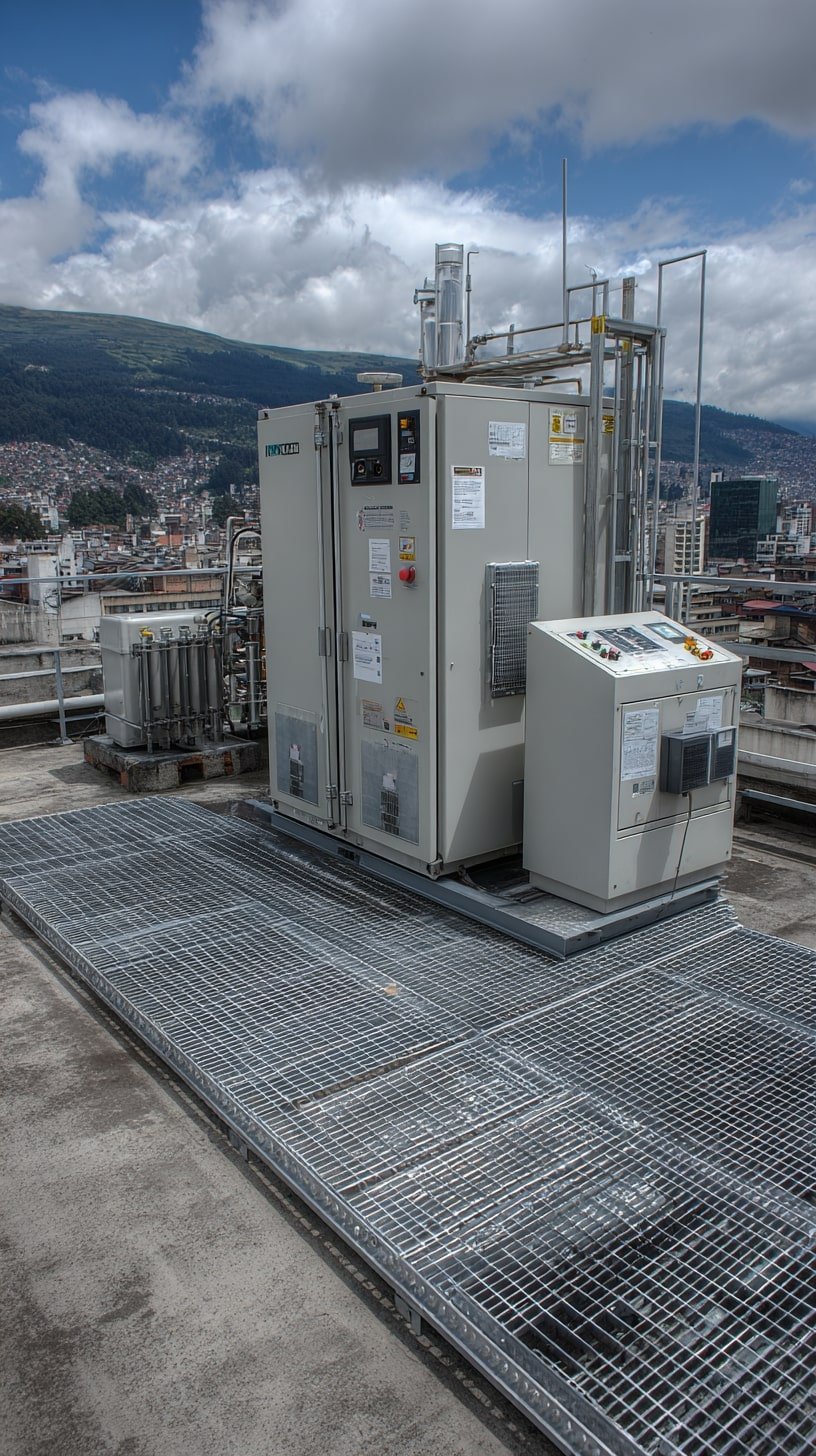
Precision counts. These rooftop panels may look overbuilt, but they open new ground for fermentation at scale. Climate control, data tracking, timed flush valves,every setting dialed in.
Metal grates underfoot boost drainage and airflow. Not pretty. But potent. For brewers, biofermenters, or urban ag tech, it’s clean infrastructure waiting for living systems to plug in.
15. Cap Roof Vents with Mesh Chimneys for Passive Ferment Exhaust
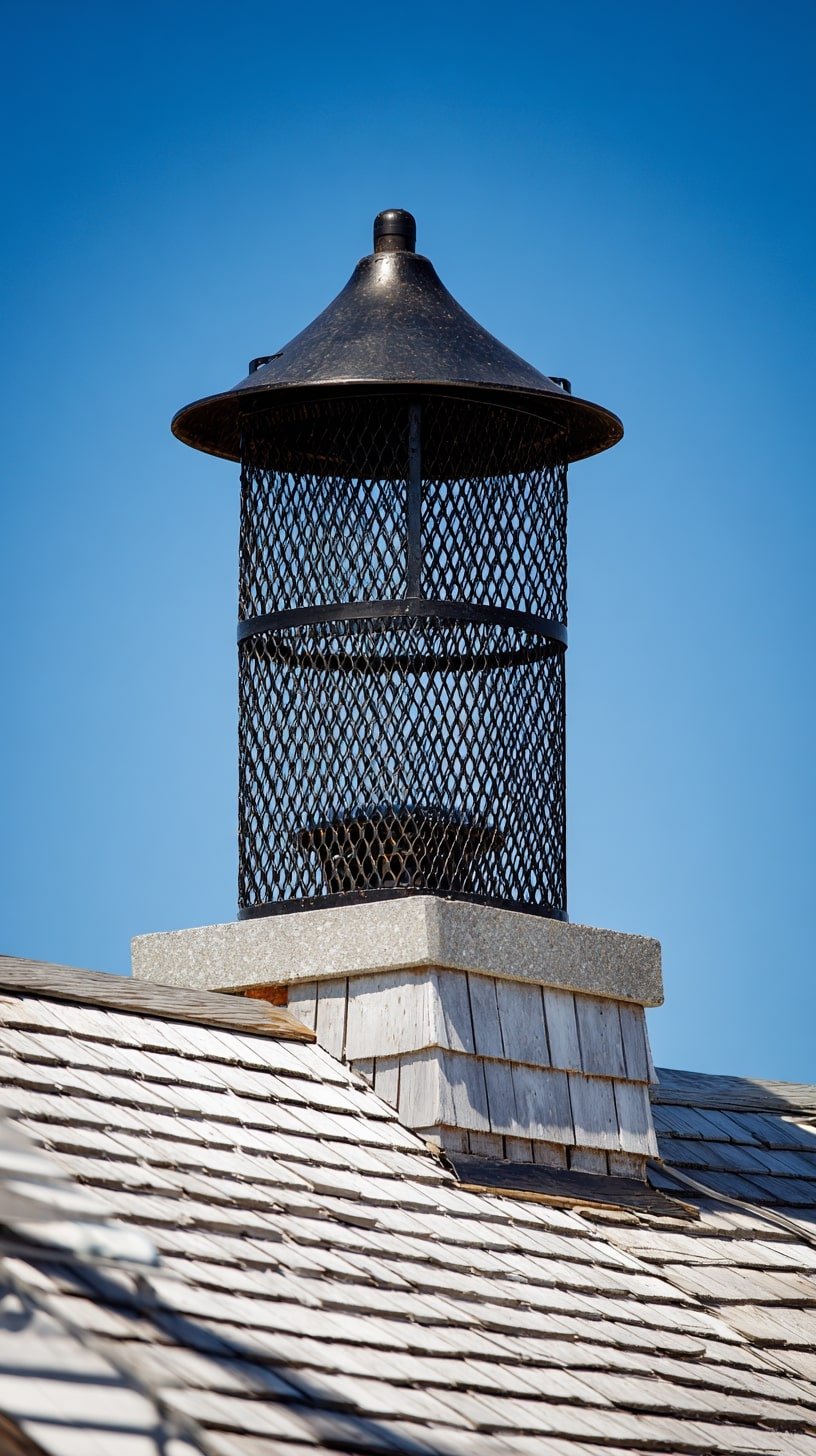
Air matters. Ferments breathe, and this capped chimney lets air flow while blocking pests.
The diamond mesh diffuses gases slowly,great for long cures or warm-climate kombucha. Rust-proof, storm-safe, low profile. No fans, no wires, just smart material use.
A traditional roofline doesn’t get compromised. Ventilation, hidden in plain sight. Quiet tech with old-world bones.
16. Pair Galvanized Tanks with Raised Beds for a Dual-Purpose Layout
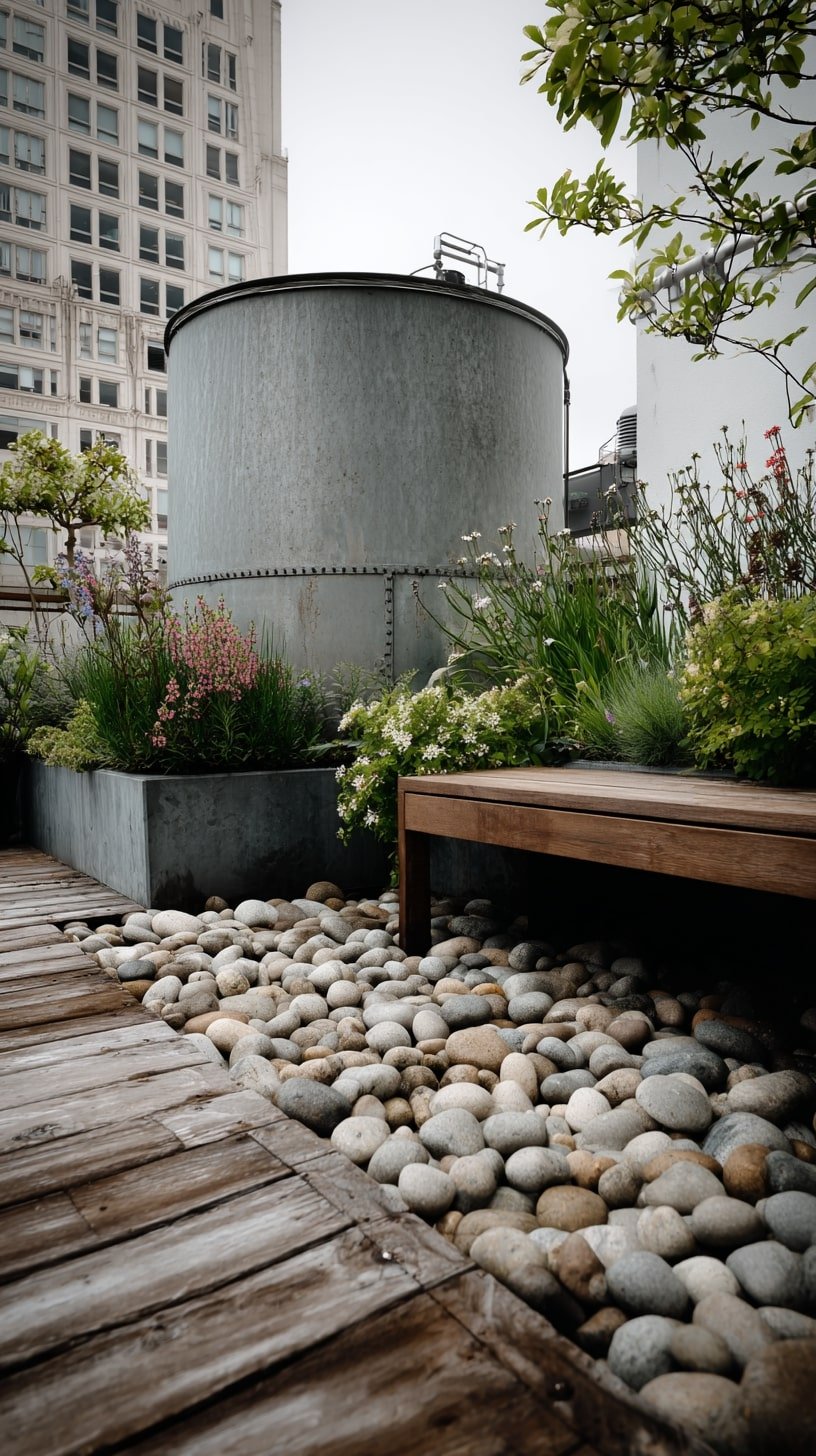
Strong contrast here. Industrial bulk tank, softened by layered greenery. Raised beds flank both ,sidesfunctional edge planting with height control.
Stone mulch keeps things dry, reduces splashback near base. The wood plank walk warms up the space, directs movement. This setup feels balanced.
Tough storage meets garden calm. Great for kombucha barrels or brine tanks needing shade and airflow.
17. Anchor a Gathering Space with a Central Wood Platform

Tough meets tranquil. That raised wood hub steals focus,clean lines, warm tone, grounding presence.
Crushed gravel keeps the palette light, bounces sunlight, drains fast. Steel tank in the backdrop?
Perfect for fermentation. Elevated to free up space, it adds industrial drama without stealing function. Scatter of boulders and grasses keeps it soft. Sharp lines meet loose edges. It works.
18. Cluster Sculptural Planters to Define Flexible Work Zones
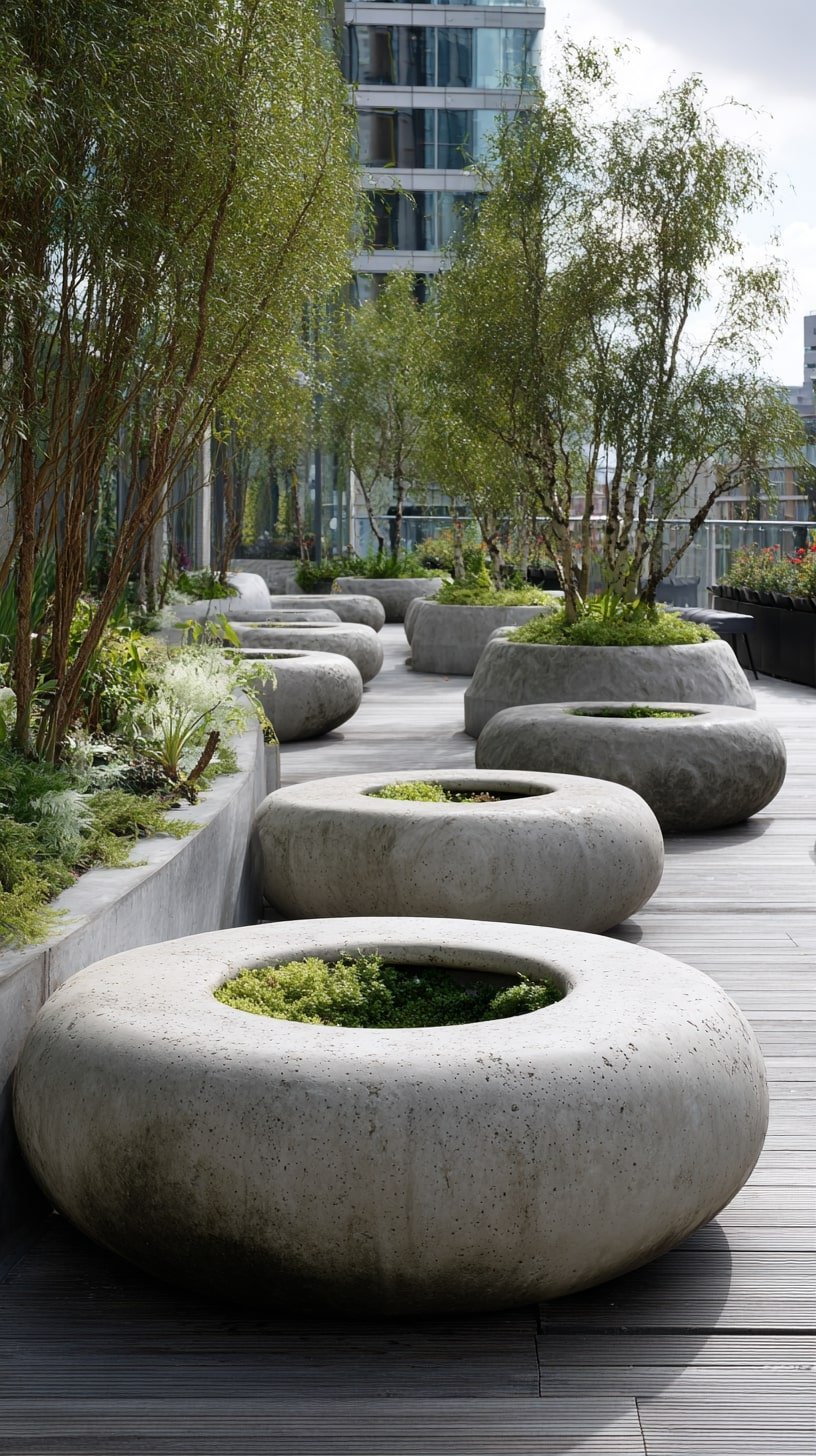
Circular. Solid. Surprisingly soft. These concrete forms double as planters and impromptu seats, perfect for fermentation areas needing shade and flow. Gaps between each piece invite movement.
Low-maintenance sedums tuck into their centers,lush without being fussy. Trees bring vertical rhythm. Feels meditative, but not sterile. You could place fermentation jars nearby without fuss. Industrial edge, gentle footprint.
19. Pair Dual Tanks with Wildflowers for Passive Cooling and Appeal
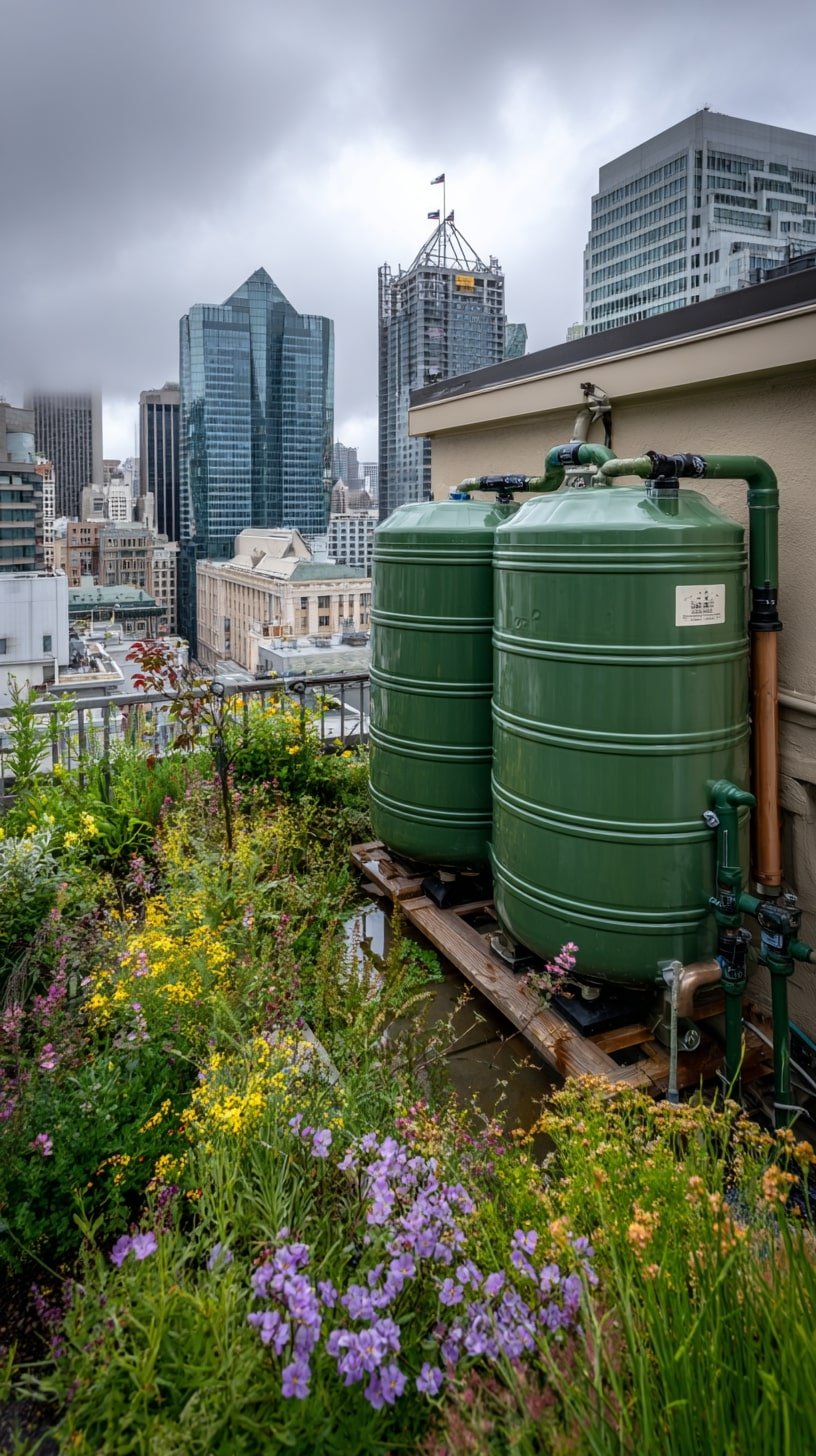
Two green tanks. Simple, sturdy. Their rounded form plays off wild urban blooms, softening an otherwise industrial rooftop edge. Color works hard here,those floral yellows and purples echo upward, balancing bulk with delicacy.
The plants serve more than looks too. They insulate, cool, protect fermentation containers from heat. A working corner that still feels alive. Honest. Tactile. Resilient.
20. Expose Root Blocks to Test Microbial Soil Health
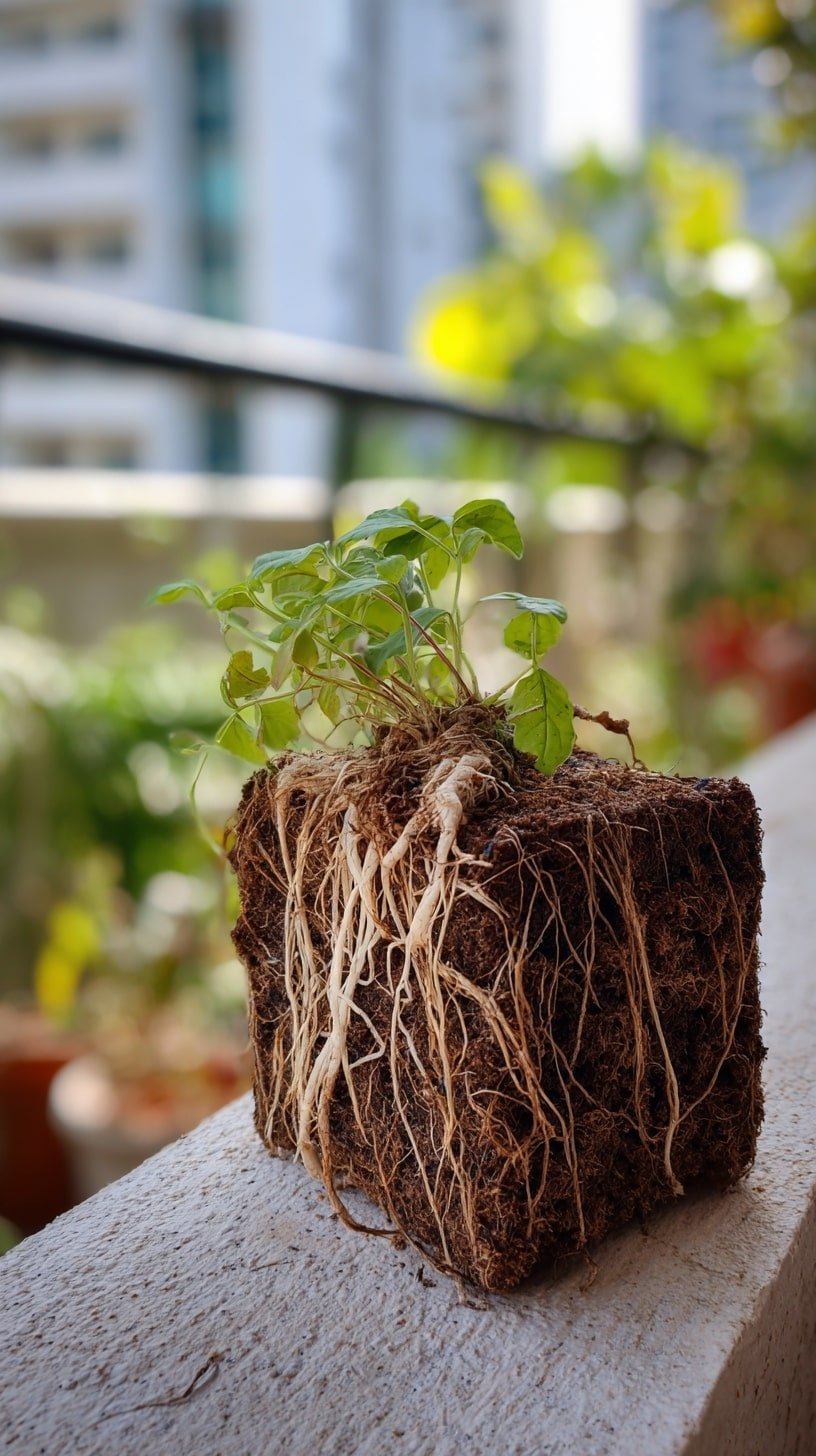
No container. Just roots. This compact soil cube lays everything bare, revealing what fermentation zones often hide.
Strong root threads signal good drainage, rich microbial life,ideal if using compost teas or bokashi runoff to amend soil. Great teaching moment too. Let it sit on a ledge, near your station.
Watch it dry, shift, respond. Soil talks, if you let it.
21. Weave Pebble Bands Through Drainage Grid Paths
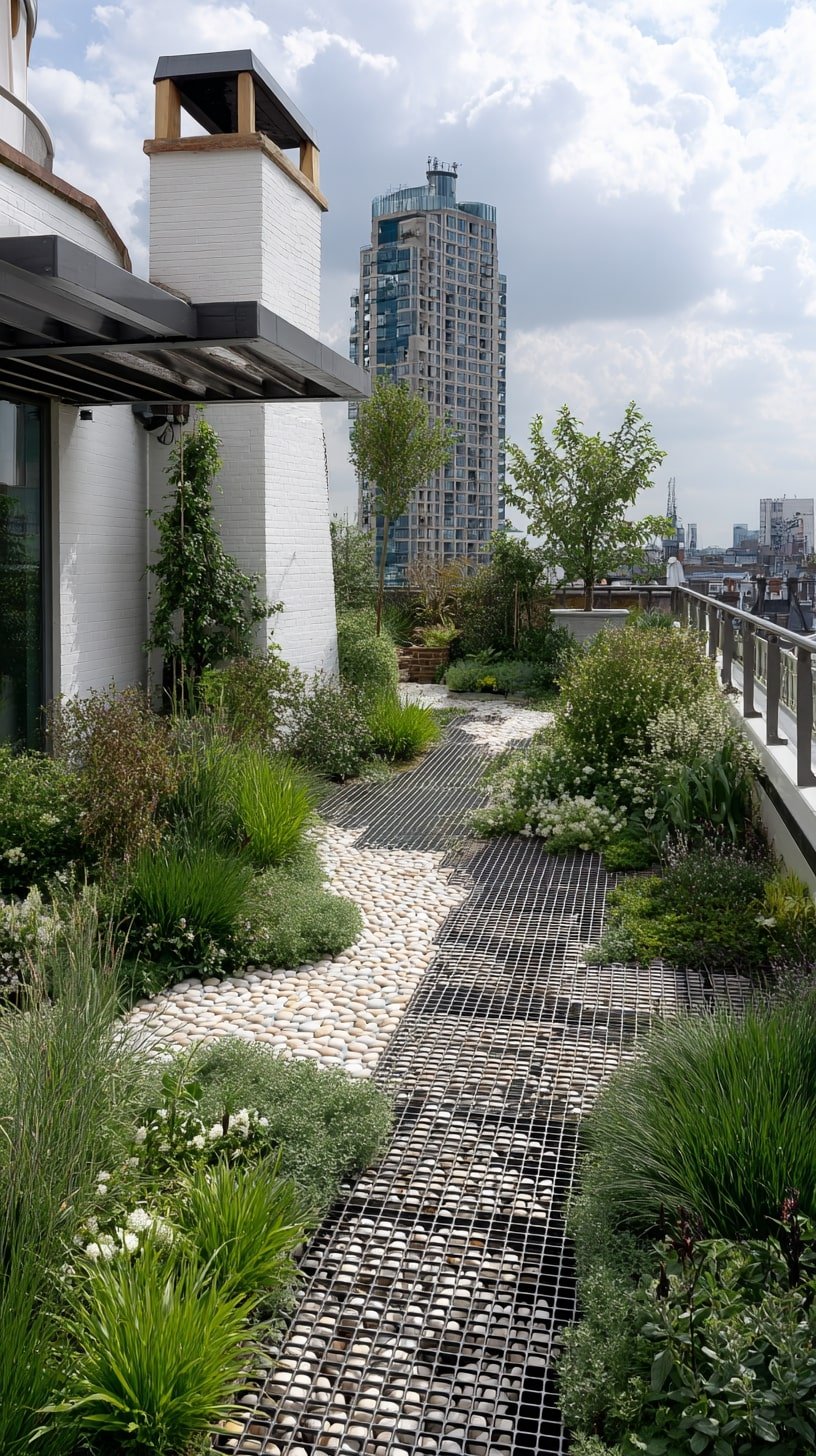
Contrast carries this rooftop path. Hard metal grates keep it practical, water-ready. But flowy pebble strips wind through like quiet riverbeds, softening each step.
That balance,between runoff control and visual rhythm,makes this ideal near fermentation tubs where spills or rinse water matter. Bonus: those curvy edges break monotony, invite pause, even barefoot wandering. Pretty smart. Pretty resilient.
